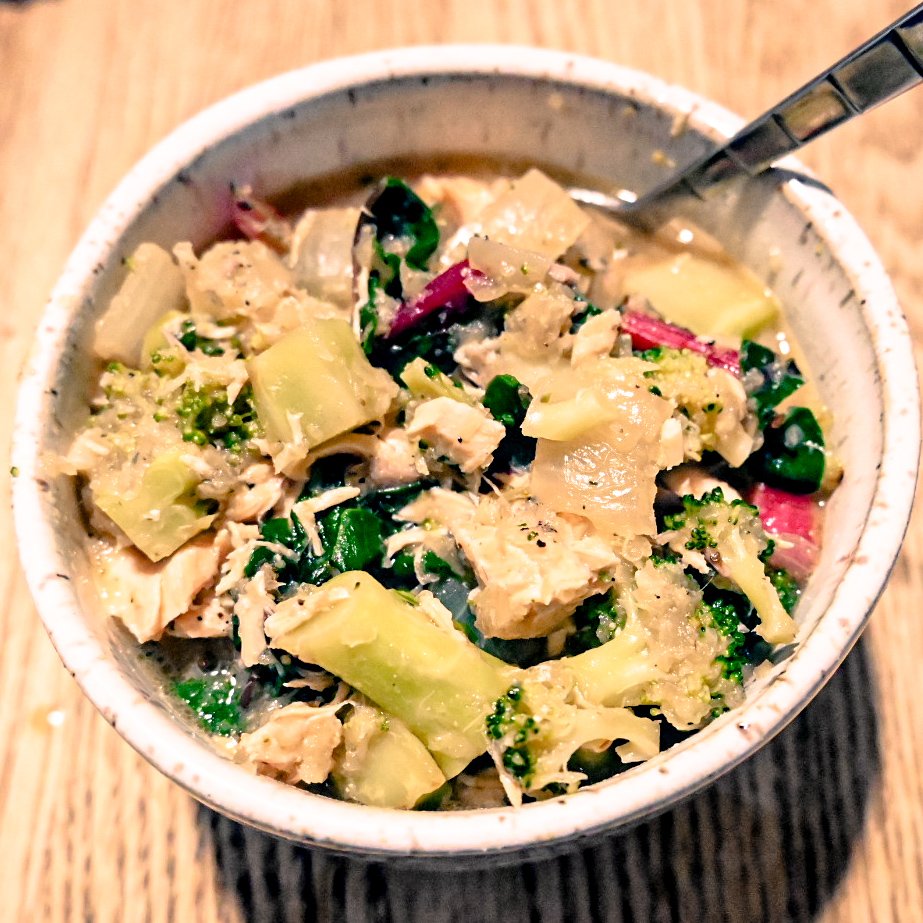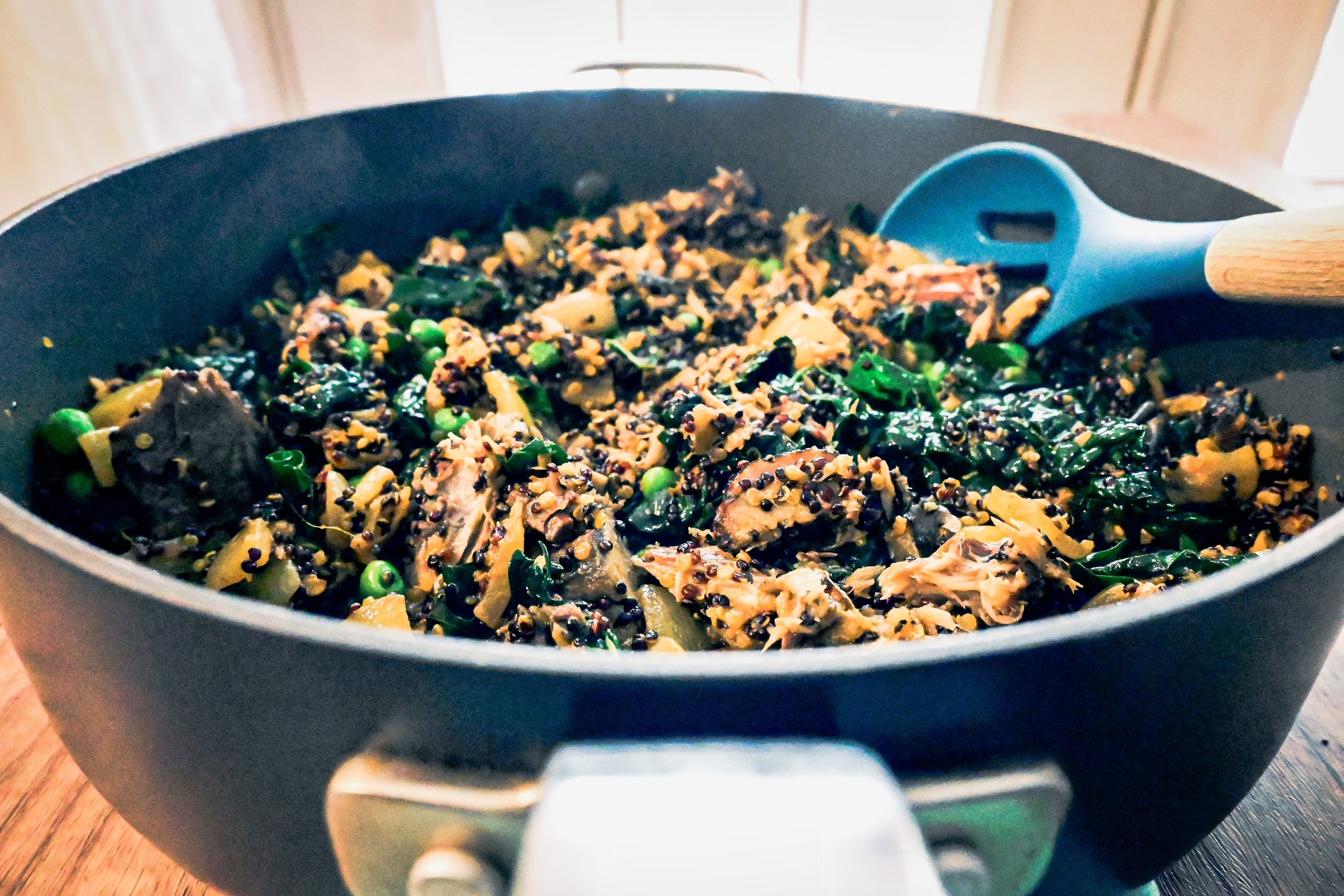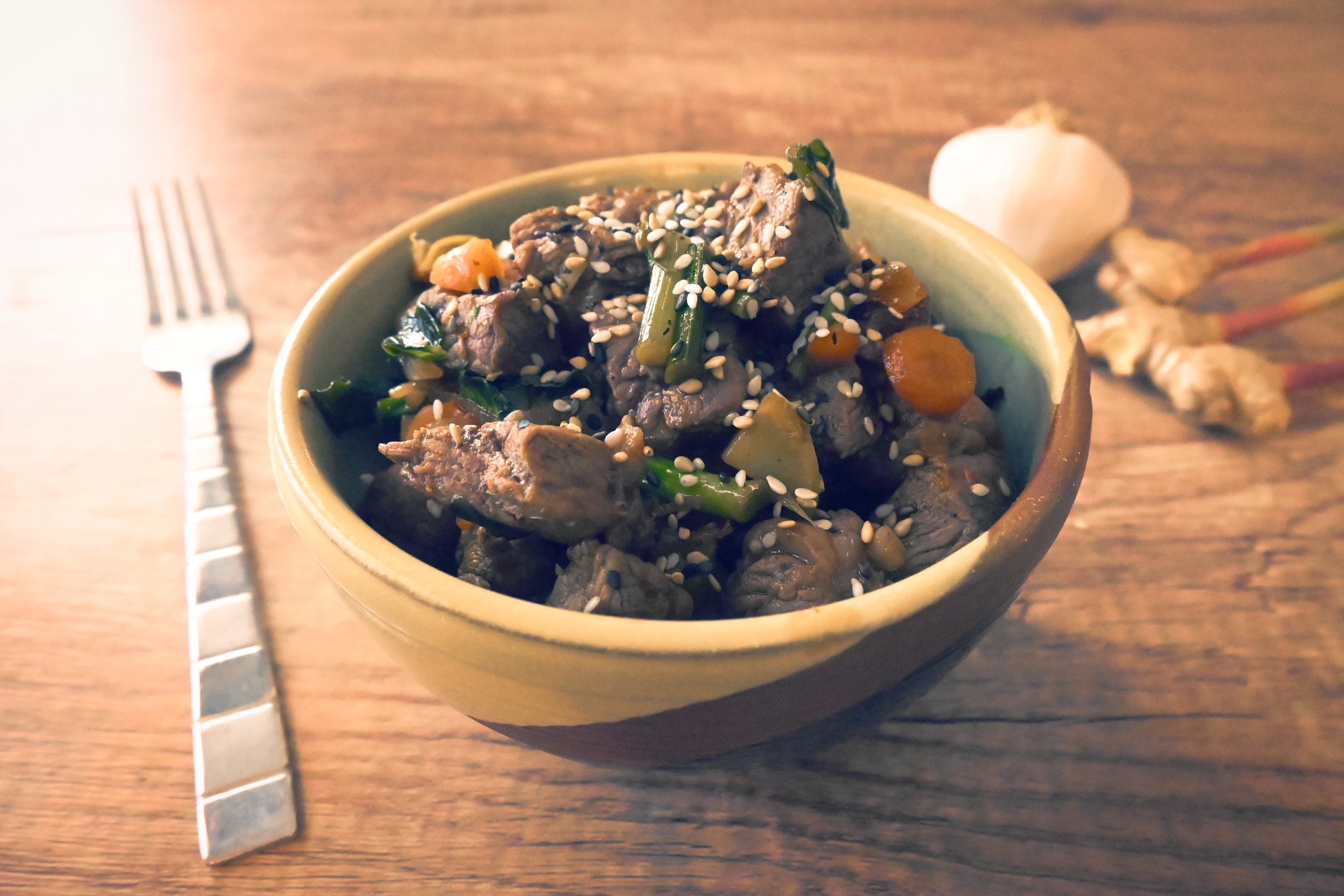Enjoy a warm bowl of miso ginger soup, filled with omega-3 fatty acids, protein, and fiber.
Ingredients
1.25 - 1.5 lb salmon
1lb broccoli, chopped
2 tbsp olive oil, divided
1 yellow onion, chopped
5 cloves garlic, minced
2 tbsp grated fresh ginger
1/2 tsp black pepper
1/4 c miso paste
4 c water
1 bunch Swiss chard, thinly chopped
Directions
Preheat oven to 400 degrees. Line a baking sheet with parchment paper.
Place salmon on the parchment paper and sprinkle with salt and pepper to taste.
Roast salmon for 20 - 30 minutes, depending on thickness. The safe cooking temperature for salmon is 145 degrees. I, personally, like my salmon cooked to about 125 - 130 degrees.
While the salmon is roasting, heat 1 tbsp of olive oil in a large pot over medium heat. Once hot, add the broccoli and sauté until the broccoli starts to brown, about 10 minutes.
Remove the broccoli to a separate plate and add 1 tbsp olive oil to the pot. Add the onion and sauté until it starts to soften, about 5 minutes.
Add the garlic, ginger, black pepper, and miso paste, and sauté until the garlic and ginger become fragrant, about 1 minute.
Add 4 cups water and stir to combine the miso paste with the water. Using an immersion blender, blend the soup mixture. I like to only partially blend it, to leave some chunks of onion whole.
Add the broccoli back into the soup, bring to a boil, and then lower the heat to low to simmer, uncovered, for 10 minutes.
Add the Swiss chard and simmer until the Swiss chard is fully wilted.
Break apart the salmon and add to the soup.
Dish soup into your favorite bowls and enjoy.
Serves 5 - 6
Notes
Plant-based
Substitute tofu or tempeh for the salmon.
Veggie substitutions
Substitute spinach or kale for the Swiss chard. Substitute carrots, cauliflower, or radishes for the broccoli.
Nutrition (based on 5 servings)
Calories: 433
Fat: 24.9g
Carbohydrates: 18.2g
Fiber: 5.3g
Protein: 35.5g
Calcium: 10.7%
Iron: 13.6%
Potassium: 27.3%
Vitamin C: 220.3




















